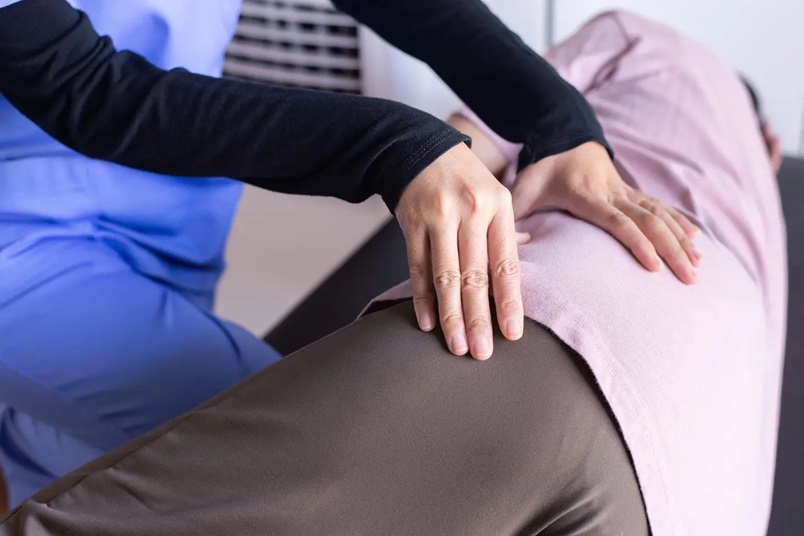The occurrence of hip pain can be attributed to a variety of underlying conditions, including arthritis, bulging discs, or trauma, which can have a significant effect on one's mobility and overall well-being.
Addressing hip pain promptly is crucial to prevent complications and enhance overall wellness. Treatment options range from conservative approaches such as physical therapy and medications to more invasive interventions such as joint injections or surgery.
Early intervention can mitigate discomfort, restore function, and prevent long-term joint damage. Tailoring treatment to the specific cause of hip pain is vital for effective management, highlighting the importance of accurate diagnosis and personalized care.
In this blog, we aim to provide three fundamental hip treatment options for hip-related issues.
The 3 Hip Pain Treatment Options
Hip treatment options vary based on the specific condition or injury. Here are the most common three hip pain treatment options:
1.Conservative Treatment

A non-invasive method of treating hip pain symptoms is offered by conservative treatment. The following are the various conservative treatment approaches:
Physical Therapy: It is an important part of hip treatment, especially for conditions such as osteoarthritis, hip impingement, or after hip surgery. Physical therapists design tailored exercise programs to improve mobility, strength, and flexibility. These exercises aim to alleviate pain, enhance joint function, and prevent further complications.
Pain Medications: Non-prescription pain relievers or non-steroidal anti-inflammatory drugs (NSAIDs), can help manage pain and reduce inflammation. Consultation with a healthcare professional is advised for proper usage.
Joint Injections: Corticosteroid injections may be considered for targeted pain relief by reducing inflammation in the hip joint. However, these should be administered under medical supervision due to their side effects.
Assistive Devices: Using walking aids or hip braces can provide additional support, reducing strain on the hip joint during activities.
2. Surgical Treatment

Surgical intervention can be a viable option for individuals experiencing persistent hip pain that does not respond to conservative treatments. The following are the various surgical procedures available to address different hip conditions:
Arthroscopic Hip Surgery: It involves minimally invasive techniques, utilizing small incisions and a camera to visualize and treat hip joint issues. Common treatments include tissue drainage, labral reconstruction, and impingement treatment. This minimizes tissue injury and enhances healing and recovery.
Total Hip Replacement (THR): For severe hip arthritis, THR is a definitive solution. During this treatment, an artificial implant is used to replace the injured hip joint. Modern implants are durable and designed to mimic the natural hip joint, providing pain relief and improved function.
Hip Resurfacing: This technique involves preserving more of the patient's natural bone than traditional hip replacement. It is particularly suitable for younger, active individuals with hip arthritis, offering a more conservative option.
Osteotomy: In cases of hip deformities or dysplasia, osteotomy may be recommended. This procedure involves cutting and realigning the hip joint to improve its stability and function, redistributing weight-bearing forces to alleviate pain.
Revision Hip Surgery: When a previous hip surgery fails or complications arise, revision surgery may be necessary. It includes keeping an eye out for infections, doing necessary maintenance, managing wear and tear, and resolving issues with the initial implant.
3. Lifestyle Modifications

Hip pain can significantly impact one's quality of life, but adopting certain lifestyle modifications can help alleviate discomfort and improve overall well-being.
Physical Activity: Engage in low-impact exercises like swimming or cycling to strengthen the muscles around the hip joint. Stay away from strenuous activities that might make your pain worse.
Weight Management: Maintain a healthy weight to reduce the load on the hip joint. Excess weight can contribute to increased pressure and inflammation in the hip area.
Posture Awareness: Be mindful of your posture during daily activities. Maintain a neutral spine position while sitting and standing to reduce strain on the hip joint.
Proper Footwear: Choose supportive and comfortable footwear to provide adequate cushioning and stability. Proper footwear can positively impact hip alignment.
Stretching and Flexibility: Incorporate gentle hip stretches into your daily routine to improve flexibility and range of motion. Consult a physiotherapist for personalized stretching exercises.
Ergonomics: Ensure that your workspace and living environment are ergonomically sound. Properly designed furniture and tools can minimize unnecessary stress on the hip joint.
Balanced Nutrition: Adopt an anti-inflammatory diet rich in omega-3 fatty acids, fruits, and vegetables. This can help reduce inflammation and promote joint health.
In conclusion, hip treatment options are diverse and tailored to the specific needs of the individual. A comprehensive approach often involves a combination of physical therapy, medications, surgical interventions, and lifestyle modifications. Choosing the right treatment for you depends on several factors, including the condition you have, the severity of your symptoms, and your overall health. It is important to consult with your doctor to decide what’s best for you and get personalized advice before undergoing the treatment procedures.
KM NU Hospitals in Ambur, India, is renowned for delivering top-notch hip pain treatment and care. With a commitment to excellence, their expert medical team employs advanced techniques and personalized approaches to address hip-related issues. KM NU Hospitals is committed to providing the highest quality of care to its patients, from the initial diagnosis to comprehensive treatments, to ensure optimal outcomes and an improved quality of life.
Author: Dr. Tahir Ahmed
References:
1. Hip Pain. Cleveland Clinic.
https://my.clevelandclinic.org/health/symptoms/21118-hip-pain.
2. Hip Pain. Hospital for Special Surgery.
https://www.hss.edu/hip-pain-center-treatments.asp.
3. Hip Pain. Mayo Clinic.
https://www.mayoclinic.org/symptoms/hip-pain/basics/when-to-see-doctor/sym-20050684.
